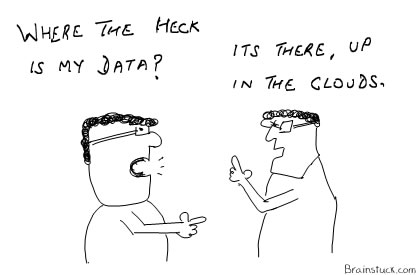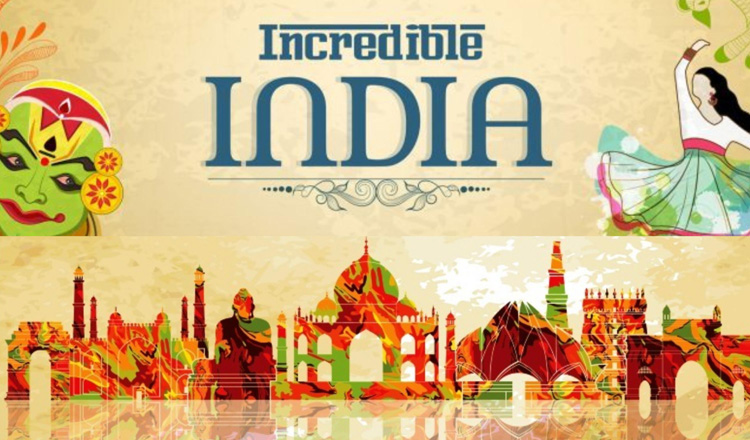 I read this very interesting article on the growth of the much used device for everyday requirements. Below are some very great thoughts that the author has shared which I completely agree upon..
I read this very interesting article on the growth of the much used device for everyday requirements. Below are some very great thoughts that the author has shared which I completely agree upon..
Hope you find it interesting...
Forty-six years ago, Intel cofounder Gordon Moore published his observation that the number of transistors that could be put on a silicon chip doubled about every two years—meaning that computer capacity would also increase geometrically.
At the time, Moore believed that this growth might continue for “perhaps 10 years.” In fact, he was off by three decades and counting. Over time, advances in chip technology have proceeded almost like clockwork, with capacity sometimes doubling even faster. This spring, Intel announced yet another new chip that keeps Moore’s Law right on track.
Intel says a vertical ridge on its new 22-nanometer Ivy Bridge 3-D Tri-Gate chip creates much more real estate for transistors. “Just as skyscrapers let urban planners optimize available space by building upward, Intel’s 3-D Tri-Gate transistor structure provides a way to manage density,” according to the May 11 announcement. But how long can this doubling go on?
At one extreme, pessimists argue that it can’t continue for too much longer—that the circuits are becoming so tiny now that physics will prevent it. Already, the scale is difficult to comprehend: Intel’s May release noted that “more than 6 million 22nm Tri-Gate transistors could fit in the period at the end of this sentence.” The pessimists say that the shock of running into a wall will be a terrible blow to the high-tech sector, which has worked in an environment of exponential growth for years.
At the other extreme, some futurists contend that Moore’s Law will hold for many more decades. Indeed, they say, we stand at the cusp of a “singularity,” another point like the invention of agriculture or the industrial revolution when suddenly everything changes.
THE NEW BIG BRAINS IN TOWN
Some of these writers and thinkers predict that the time will soon come (writer Ray Kurzweil points to 2025) when computers will be, briefly, as smart as people—shortly after which, they will surpass us, leading to some very strange consequences.
In his 2005 book, The Singularity Is Near, Kurzweil argues that “the pace of change of our human-created technology is accelerating and its powers are expanding at an exponential pace … within several decades, information-based technologies will encompass all human knowledge and proficiency, ultimately including the pattern-recognition powers, problem-solving skills, and emotional and moral intelligence of the human brain itself.” By the end of this century, he believes, “the nonbiological portion of our intelligence will be trillions of trillions of times more powerful than unaided human intelligence.”
Kurzweil says that this shift will lead to revolutions in medicine and other fields as brains faster and better than ours solve problems with ever-greater rapidity. Others see negatives ahead, including a complete collapse in the value of human labor—and maybe even a decision by the new management that our services are just generally no longer required.
This scenario might sound farfetched, but the singularists can’t be dismissed out of hand. Exhibit A is the astonishing technological progress made in the past 50 years. In his book, Kurzweil talks about being given access to the biggest computer in New England in 1968, an IBM 360 Model 91, which had 1 megabyte of core memory and rented for $1,000 an hour. Today, the most basic Dell desktop comes with 2 gigabytes of random access memory—2,000 times more memory than the 360 had—and it can be purchased for $279, or $43.80 in 1968 dollars.
High-end capabilities keep growing as well. In 1997, Deep Blue, an IBM computer, beat Garry Kasparov in chess. This year, Watson, another IBM super computer, beat two all-time champions of the long-running U.S. trivia game show, “Jeopardy”—perhaps less of a mathematical challenge than the chess game, but a testament to the virtues of a 4-terabyte memory. (A terabyte is 1,000 gigabytes.) “I for one welcome our new computer overlords,” quipped contestant Ken Jennings at the conclusion of the three-day match.
SURE THINGS
Whether Kurzweil’s singularity is near or far, the consensus seems to be that chip capacity, bandwidth speeds, and storage capacity—the three key elements of IT growth-—will all keep increasing at exponential rates for at least the next 10 to 20 years.
Chip capacity.
Intel’s latest chips are just 22 nanometers wide, not far off from the point where the rules of classical physics no longer apply. Ten nanometers is the absolute limit for transistor miniaturization—any smaller and you’re getting close to the atomic level, where non-classical effects arise, says Bruno Thedrez, a professor of communications and electronics at ParisTech. However, he adds, stacking chips will provide a third dimension for growth for some years to come.
Bandwidth
Jakob Nielsen, the Internet design guru, has noted that the amount of bandwidth available to high-end Internet users has grown by roughly 50% every year since 1983. Nielsen, in an update, recalls that he wrote his original article on this topic in 1998 on an ISDN line that could download 1 megabyte per second, and that this year he could download 31 mbps. Looking ahead, Thedrez says that scientists have pushed 100 gigabytes per second over a single-wavelength optical fiber and that within 20 years there is now no technical reason that fiber capacity couldn’t climb to 50 terabytes, or 50,000 gigabytes. Wireless bandwidth growth is a bit more problematic, Thedrez says, first because the power required would make your phone too hot to handle, and second, bandwidth is already divided by governments. It’s a lawyer limit, he jokes, the one kind physicists have no tools to fight against.
Storage
Mark Kryder, former chief technology officer at Seagate, the hard-disk company, and now a professor of electrical and computer engineering at Carnegie Mellon University in Pittsburgh, says that the capacity of hard disk drives increases about 40% every year. He estimates that by 2020, people will be able to buy a 15-terabyte, 2.5-inch disk for less than $150—and says that he thinks there is a good chance he is being too conservative. To put it into context, that’s a much more powerful and compact disk than anything available on the market today for consumers at any price. By comparison, Best Buy now offers a 10TB external disk for $1,799 that’s about 5.9×7.3 inches.
However, Kryder says he suspects the storage industry’s 40 percent growth rate will break down between 2020 and 2025. At that point, he says, the industry will either move toward a different technology or, if exponential growth is continuing in other parts of the computer, such as the processor, more effort will be made to ensure that storage can keep up. “If one component (processor, memory, storage, for example) becomes much more costly, resources will be shifted to bring its cost down and in line with the others,” he says. “Economics really does control what gets developed.”
HOW THINGS WILL CHANGE
But do we really need a 15-terabyte disk drive? “Throughout my 45 years of working in the storage industry, people have always said that they couldn’t imagine what they would do with more storage capacity, but demand has always been there for the exponential increase,” Kryder says. “Today, for example, we look at YouTube videos that have much less than HD resolution. Why don’t YouTube videos come in 3D HD? As processing speeds, communication speeds, and storage capacities increase, they probably will.”
Assuming all this acceleration stays on track, will it matter? Beyond the joys of 3D YouTube video, will such advances bring any real gains to humanity?
The answer seems to be, yes. While Thedrez observes that applications have always expanded to fit the available bandwidth-—sometimes in ways rational thinking would not predict—he also says that future growth should help the trend toward cloud computing and pave the way for the coming Internet of Things. In addition, many complex problems should become easier to solve. Consider the impact on medicine, where computers seem likely to change everything.
My opinions - I also remember once during one my B-School projects that I had worked on for Microsoft where I had read about IBM using idle pc's during office hours when employees have lunch or take a break from their work by locking their workstations. This unique feature would help IBM solve global issues of solving complex health related projects by using the processor speed of idle computers to enable faster time for completing a said process or task. Several of IBM's machines as I type today are still solving complex issues from identifying remedies for cancer and AIDS to reaching to the remotest of people in the deserted areas of Africa.
We can contribute ourselves (virtually) to the global evolution by helping such organisations in eroding poverty and gaining victory over diseases for which we yet have to find solutions
Till next time lets look up in the sky and watch the clouds while the IT geeks manage us through the virtual cloud.
- Prasad
 In my efforts to promote trade, tourism and culture, my thoughts on the the sector which very few of us Indian have given a thought.
In my efforts to promote trade, tourism and culture, my thoughts on the the sector which very few of us Indian have given a thought.








